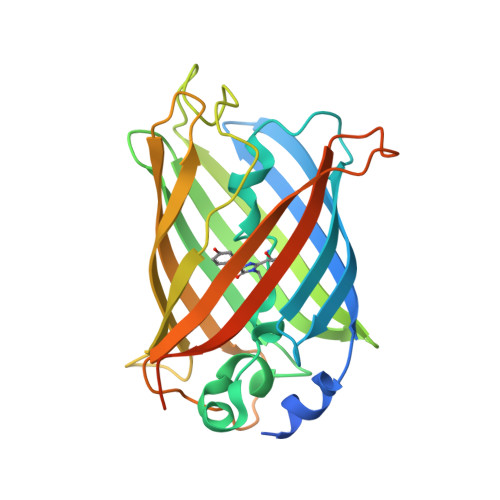Combining Structural Aggregation Propensity and Stability Predictions To Redesign Protein Solubility.
Gil-Garcia, M., Bano-Polo, M., Varejao, N., Jamroz, M., Kuriata, A., Diaz-Caballero, M., Lascorz, J., Morel, B., Navarro, S., Reverter, D., Kmiecik, S., Ventura, S.(2018) Mol Pharm 15: 3846-3859
- PubMed: 30036481
- DOI: https://doi.org/10.1021/acs.molpharmaceut.8b00341
- Primary Citation of Related Structures:
6FWW - PubMed Abstract:
The aggregation propensity of each particular protein seems to be shaped by evolution according to its natural abundance in the cell. The production and downstream processing of recombinant polypeptides implies attaining concentrations that are orders of magnitude above their natural levels, often resulting in their aggregation; a phenomenon that precludes the marketing of many globular proteins for biomedical or biotechnological applications. Therefore, there is a huge interest in methods aimed to increase the proteins solubility above their natural limits. Here, we demonstrate that an updated version of our AGGRESCAN 3D structural aggregation predictor, that now takes into account protein stability, allows for designing mutations at specific positions in the structure that improve the solubility of proteins without compromising their conformation. Using this approach, we have designed a highly soluble variant of the green fluorescent protein and a human single-domain VH antibody displaying significantly reduced aggregation propensity. Overall, our data indicate that the solubility of unrelated proteins can be easily tuned by in silico-designed nondestabilizing amino acid changes at their surfaces.
Organizational Affiliation:
Institut de Biotecnologia i de Biomedicina and Departament de Bioquímica i Biologia Molecular , Universitat Autònoma de Barcelona , Bellaterra (Barcelona) 08193 , Spain.















